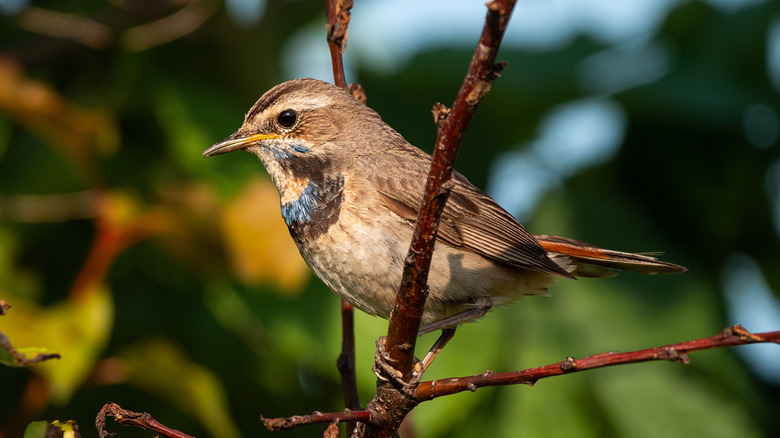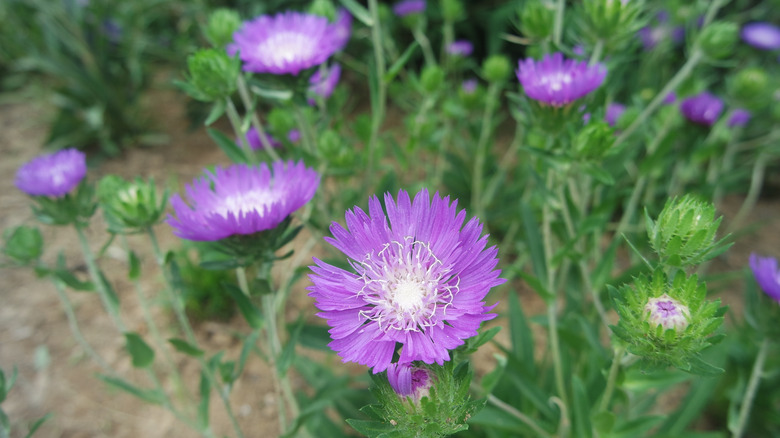The Blue-Purple Flower That'll Bring Birds And Vibrant Color To Your Garden
Blue and violet are two colors that can attract more birds to your garden. Stokesia (Stokesia laevis) can bring these hues to your yard from early summer through autumn, summoning a range of songbirds as well as butterflies, bees, and other pollinators. Blue-loving bluebirds and purple-obsessed finches are likely to seek out stokesia, and hummingbirds absolutely love its fluffy flowers, which offer an abundance of nectar. Since this plant is a perennial wildflower, it will come back year after year once you sow its seeds, plant stem cuttings, or divide mature plants. Its foliage grows 1 to 2 feet high and forms tidy mounds that need little pruning to look attractive and stay out of other plants' way. In other words, stokesia is an ideal choice for a low-maintenance landscape.
Also known as cornflower aster and stokes' aster, stokesia can handle damp areas near ponds as well as stretches of dry weather in the summer. This daisy relative is well adapted to USDA hardiness zones 5 through 9 and native to much of the southeastern United States. It prefers to bask in full sun but will accept partial shade in the southernmost parts of its geographical range. To help stokesia plants bloom for as long as they can, deadhead the flowers before they go to seed. If possible, snip away individual blossoms and stems as they reach the end of their flowering process. Lots of flowers and a long blooming season equal more feathered friends visiting your yard.
Helping stokesia thrive in your yard
Stokesia isn't vulnerable to many pests or diseases, but there are a few problems that can interfere with its growth. Though stokesia likes moisture during the growing season, a wet winter soil can kill it. Your best line of defense is ensuring that the soil surrounding your plants drains efficiently. Soil types that get waterlogged easily — clay, for example — may require troubleshooting. Luckily, there are a few ways to improve heavy clay soil in your garden, like incorporating organic material. Compost is an excellent choice because it changes the soil's structure in ways that discourage excess water from hanging around near plant roots. Also consider mulching your stokesia to provide insulation when temperatures drop. This protects your plants from the stress of repeated freezing and thawing, which can causes damage to the plant.
Birds will help keep bugs away from your stokesia, keep an eye out for slime trails, leaf holes, and other signs of slugs and snails. These critters tend to crop up when the habitat isn't dry enough, so addressing soil drainage issues should help deter them. Leaving plenty of space between your plants is also wise, as this encourages air to circulate. Keep in mind that each plant can grow to a width of 18 inches when determining how to space them out. These preventive measures can also fight powdery mildew and fusarium wilt, fungal issues that sometimes bother stokesia.

